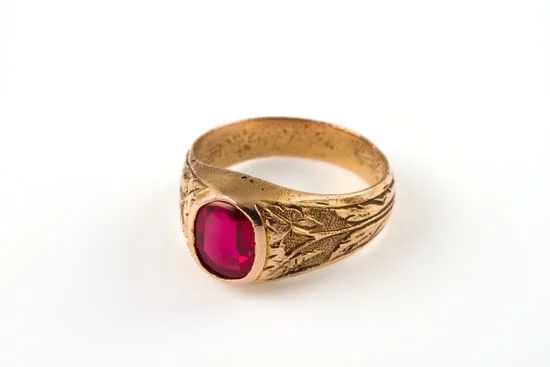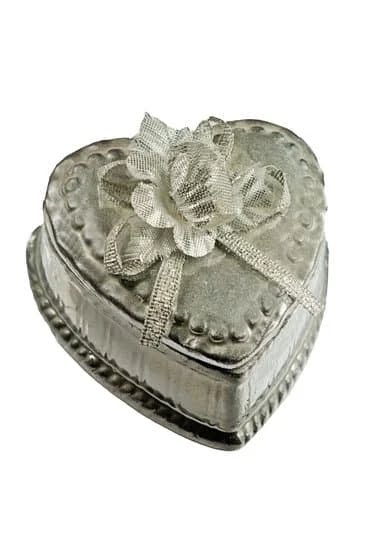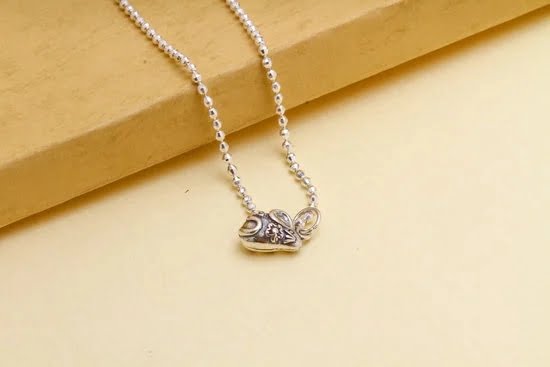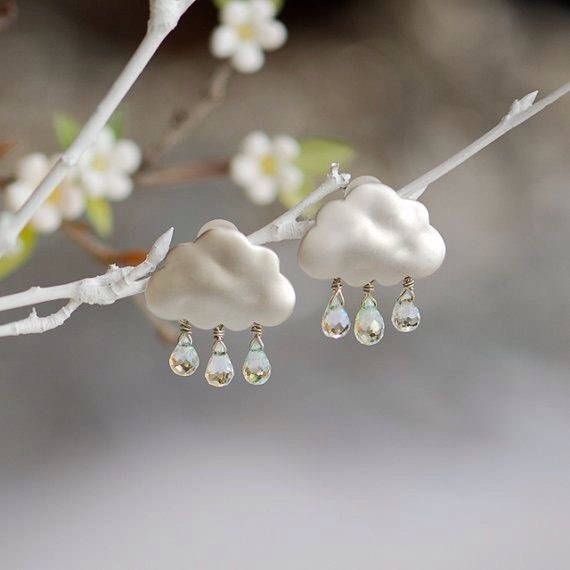Art Deco jewelry pendants have captivated fashion enthusiasts with their timeless beauty and exquisite craftsmanship. The Art Deco movement, which emerged in the 1920s, revolutionized the world of design, influencing various art forms, including jewelry. With its bold geometric shapes, clean lines, and vibrant colors, Art Deco jewelry became synonymous with sophistication and glamour.
Art Deco jewelry pendants have remained popular throughout the years due to their unique blend of elegance and modernity. These pendant designs reflect the spirit of the Art Deco era, characterized by a departure from traditional ornate styles and an emphasis on streamlined simplicity.
From the origins of this style to its iconic representations in different decades, Art Deco jewelry pendants have evolved to incorporate influences from various cultures and artists. This article will delve into the history, design characteristics, materials used, popular themes and motifs, as well as showcase famous pendants worn by celebrities and socialites.
So join us on a journey through time as we explore the allure of Art Deco jewelry pendants – their remarkable designs that continue to fascinate collectors and fashion enthusiasts alike.
History of Art Deco Jewelry Pendants
Art Deco jewelry pendants have a rich and fascinating history that spans several decades. The Art Deco movement itself emerged in the 1920s as a response to the elaborate and ornate designs of the previous era. It was characterized by a modern, geometric aesthetic that reflected the changing world and shifting societal values.
During this time, jewelry designers began experimenting with new materials and techniques to create bold and innovative pieces. Art Deco jewelry pendants became particularly popular due to their versatility and ability to effortlessly enhance any outfit.
Art Deco jewelry pendants drew inspiration from various cultures and artistic movements, resulting in a fusion of different styles and influences. Egyptian motifs, such as scarabs and hieroglyphics, were especially common during this period, thanks to the discovery of Tutankhamun’s tomb in 1922, which sparked widespread fascination with ancient Egyptian art.
Throughout the decades, iconic Art Deco jewelry pendants emerged as timeless symbols of style and sophistication. In the 1920s, renowned jewelers like Cartier and Tiffany & Co. embraced the Art Deco aesthetic with their geometrically-inspired designs featuring vibrant gemstones such as emeralds, rubies, and sapphires.
In the following decades leading up to World War II, Art Deco jewelry pendants evolved to incorporate more streamlined forms due to economic constraints. Lightweight materials like Bakelite were used to create affordable pieces that retained the distinct Art Deco look.
The post-war era brought a resurgence in luxury and glamour, which was reflected in the design of Art Deco jewelry pendants. Hollywood actresses like Grace Kelly and Elizabeth Taylor popularized elaborate diamond pendant necklaces that adorned red carpet looks.
Today, vintage Art Deco jewelry pendants continue to be highly sought after by collectors and fashion enthusiasts alike for their timeless elegance. These exquisite pieces serve as reminders of an era that celebrated innovation, individuality, and bold self-expression.
| Decade | Iconic Art Deco Jewelry Pendants |
|---|---|
| 1920s | The “Tutti Frutti” bracelet by Cartier featuring carved emeralds, sapphires, and rubies in a vibrant, abstract design. |
| 1930s | The “Platinum Skyline” pendant by Van Cleef & Arpels, inspired by the skylines of New York City and Paris with its geometric lines and diamond accents. |
| 1940s | The “Trilogy” pendant by Tiffany & Co., featuring three graduated diamonds set in platinum, symbolizing love, past, present, and future. |
Design Characteristics of Art Deco Jewelry Pendants
Art Deco jewelry pendants are known for their distinct design characteristics that set them apart from other styles. The Art Deco movement, which emerged in the 1920s and 1930s, embraced modernism and a bold aesthetic that reflected the spirit of the times. When it comes to Art Deco jewelry pendants, there are several key design elements that make them instantly recognizable.
One of the hallmark features of Art Deco jewelry pendants is the use of geometric shapes and clean lines. Triangles, squares, rectangles, and circles are often incorporated into the design, creating a sleek and symmetrical aesthetic. This emphasis on geometric shapes was influenced by the rise of Cubism and Futurism in art during this period.
Bold colors were also prominently used in Art Deco jewelry pendants. Bright gemstones such as emeralds, rubies, and sapphires were popular choices to add a pop of color to these pieces. Black onyx was often used as well, contrasting against white diamonds or platinum settings to create a striking visual effect.
An interesting aspect of Art Deco design is the combination of symmetrical and asymmetrical elements. While many Art Deco jewelry pendants feature symmetrical designs with balanced proportions, there is also a playfulness with asymmetry. Some pieces may have a central focal point surrounded by smaller asymmetrically placed details or varying lengths in chains.
Overall, the design characteristics of Art Deco jewelry pendants showcase a balance between modernity and elegance. These pieces continue to captivate collectors and enthusiasts today with their timeless appeal and distinctive style.
| Design Elements | Description |
|---|---|
| Geometric Shapes | Incorporation of triangles, squares, rectangles, and circles |
| Bold Colors | Use of bright gemstones such as emeralds, rubies, and sapphires |
| Symmetry and Asymmetry | Combination of both symmetrical and asymmetrical designs |
Materials Used in Art Deco Jewelry Pendants
Art Deco jewelry pendants are known for their exquisite craftsmanship and the use of a variety of materials. The materials chosen played a significant role in defining the style and elegance of these pieces. Art Deco jewelry designers carefully selected materials that would enhance the geometric shapes, clean lines, and bold colors that were characteristic of the Art Deco movement.
Use of Precious and Semi-Precious Gemstones
One of the distinguishing features of Art Deco jewelry pendants is the use of precious gemstones such as diamonds, emeralds, rubies, and sapphires. These gemstones were often cut into geometric shapes, such as baguettes or princess cuts, to complement the overall design aesthetic. The brilliance and sparkle of these gemstones added a touch of luxury to Art Deco pendants.
In addition to precious gemstones, Art Deco jewelry also incorporated semi-precious gemstones like amethysts, aquamarines, citrines, and pearls. These stones were used to add vibrant pops of color or create visual contrast against more neutral metal tones.
Popularity of Platinum, Gold, and Silver
Art Deco jewelry pendants were typically crafted using platinum, gold (both white and yellow), and silver. Platinum was particularly favored for its strength, durability, and ability to hold intricate detailing. It became a preferred metal choice during this era due to its ability to showcase diamonds and other precious stones without interfering with their brilliance.
Gold was also prevalent in Art Deco jewelry design due to its versatility. White gold gave a sleek modern look while yellow gold provided warmth and richness. Sterling silver was often used as an affordable alternative for those who sought Art Deco-inspired pieces on a smaller budget.
New Materials and Advances in Technology
During the 1920s and 1930s when the Art Deco movement was at its peak, there were several new advancements in jewelry-making technology. These innovations allowed for the use of materials such as Bakelite, a type of early plastic invented by Belgian chemist Leo Baekeland. Bakelite was highly versatile and came in bold colors, making it ideal for creating geometric shapes and colorful accents in Art Deco jewelry pendants.
Additionally, the introduction of new gemstone treatments like diamond cutting techniques and synthetic gemstones provided artists with more options to experiment with design. The use of these new materials and advanced techniques further extended the range of materials used in Art Deco jewelry pendant creation.
Overall, the choice of materials played a crucial role in creating the distinctive style that is synonymous with Art Deco jewelry pendants. From precious gemstones to innovative metals, each material was carefully considered to ensure a harmonious balance between form and function, resulting in timeless pieces that continue to captivate collectors and enthusiasts alike.
Popular Themes and Motifs in Art Deco Jewelry Pendants
Art Deco jewelry pendants are known for their stunning and intricate designs that incorporate a variety of themes and motifs. These pieces often draw inspiration from nature, as well as from Egyptian and African art. The combination of these influences results in unique and captivating pendants that have stood the test of time.
One common theme seen in Art Deco jewelry pendants is nature-inspired elements. Flowers, leaves, and animals are frequently depicted in these pieces, capturing the beauty of the natural world in a stylized and geometric way. Floral motifs, such as lilies, orchids, and roses, were especially popular during the Art Deco era. These motifs were often adorned with colorful gemstones to enhance their vibrancy.
Another significant influence on Art Deco jewelry pendants is Egyptian and African art. The discovery of King Tutankhamun’s tomb in 1922 sparked an enthusiasm for all things Egyptian, which was reflected in the design of jewelry during this period. Ancient symbols like hieroglyphics and pyramids were used, along with motifs inspired by Egyptian pharaohs and goddesses. Additionally, African tribal patterns, masks, and animal prints also found their way into Art Deco designs.
The combination of these themes and motifs creates a captivating fusion of cultures that adds depth and richness to Art Deco jewelry pendants. Whether it’s an elegantly crafted flower pendant or a bold depiction of an Egyptian symbol, these pieces hold a timeless beauty that continues to captivate collectors and fashion enthusiasts alike.
Some popular themes seen in Art Deco jewelry pendants include
- Nature-inspired elements such as flowers (lilies, orchids, roses)
- Leaves
- Animals
In addition to nature-inspired elements
- Egyptian motifs: hieroglyphics
- Pyramids
- Motifs inspired by Egyptian pharaohs and goddesses
Another influence is African art
- Tribal patterns
- Masks
- Animal prints
The combination of these themes and motifs creates a captivating fusion of cultures that adds depth and richness to Art Deco jewelry pendants. Whether it’s an elegantly crafted flower pendant or a bold depiction of an Egyptian symbol, these pieces hold a timeless beauty that continues to captivate collectors and fashion enthusiasts alike.
Famous Art Deco Jewelry Pendants and Their Stories
Art Deco jewelry pendants have adorned the necks of celebrities, socialites, and royals throughout history. These iconic pieces tell fascinating stories and hold significant cultural and historical value. From intricate craftsmanship to exquisite gemstones, each pendant showcases the unique beauty and style of the Art Deco era.
Coco Chanel’s “Comet” Necklace
One of the most famous Art Deco jewelry pendants is Coco Chanel’s “Comet” necklace, which she designed in the 1930s. This necklace features a shooting star design with a diamond comet suspended from a platinum chain. The pendant’s celestial motif reflects the fascination with space and technological advancements during the Art Deco period. The “Comet” necklace represents both Chanel’s innovative design sensibilities and her personal affinity for astrology.
The Duchess of Windsor’s Panther Necklace
The Duchess of Windsor, Wallis Simpson, owned a remarkable Art Deco jewelry pendant known as the Panther Necklace. Created by Cartier in 1949, this necklace is an incredible example of craftsmanship and luxury. It features a panther-shaped pendant made with onyx spots, emerald eyes, and diamonds set in platinum. The panther motif became synonymous with Cartier during the Art Deco era, symbolizing power, femininity, and elegance.
The Hope Diamond Pendant
The Hope Diamond pendant is another famous Art Deco masterpiece with an intriguing history. Believed to be cursed due to its association with ill-fortune throughout various owners’ lives, this extraordinary blue diamond pendant holds captivating allure. It was donated by Evalyn Walsh McLean to the Smithsonian Institution in 1958 to ensure its preservation for future generations to appreciate.
These are just a few examples of famous Art Deco jewelry pendants that have captivated enthusiasts around the world. Each pendant represents a unique combination of artistic expression and historical significance, making it an invaluable treasure in the world of jewelry.
Whether it’s an iconic piece worn by a fashion icon or a sentimental pendant passed down through generations, Art Deco jewelry pendants continue to fascinate and inspire new designs today. Their timeless beauty and allure have made them sought-after collector’s items that showcase the ingenuity and skill of artisans from the Art Deco era.
How to Style Art Deco Jewelry Pendants
Art Deco jewelry pendants are not just beautiful and historical pieces, but they can also be a great addition to your modern fashion wardrobe. Their unique design and timeless appeal make them a versatile accessory that can be styled in various ways for different occasions. Here are some tips on how to style Art Deco jewelry pendants:
- Statement Necklace: One of the most popular ways to wear an Art Deco jewelry pendant is as a statement necklace. This allows the pendant to take center stage and become the focal point of your outfit. Pair it with a simple, solid-colored dress or top to let the pendant shine.
- Layered Look: Another way to style an Art Deco pendant is by layering it with other necklaces. Mix and match different lengths and styles of necklaces to create a unique and personalized look. For example, you can pair a long Art Deco pendant with shorter delicate chains for a stylish layered effect.
- Vintage Glamour: To truly embrace the vintage charm of Art Deco jewelry, go for a full-on vintage-inspired look. Pair your pendant with retro-style clothing like a flapper dress or a tailored pantsuit from the 1920s or 1930s era. Complete the look with finger waves or pin-up curls in your hair.
- Casual Chic: Who says you can’t wear Art Deco pendants casually? Add a touch of elegance to your everyday outfits by styling an Art Deco pendant with jeans, t-shirt, and blazer combo. It adds instant sophistication and elevates your casual look effortlessly.
- Special Occasions: For formal events or special occasions, wearing an Art Deco jewelry pendant can enhance your overall glamourous ensemble. Consider pairing it with an evening gown or cocktail dress to create an elegant and glamorous look that will surely turn heads.
Remember, no matter how you choose to style your Art Deco jewelry pendant, the key is to let it be the star of your outfit. Keep other accessories minimal and let the pendant speak for itself. Whether you’re going for a vintage-inspired look or a modern twist, Art Deco jewelry pendants are sure to add a touch of timeless beauty to any ensemble.
Where to Find and Buy Art Deco Jewelry Pendants
Art Deco jewelry pendants are highly sought after by collectors and fashion enthusiasts alike. If you are looking to add one of these timeless pieces to your collection, there are several places where you can find and buy authentic Art Deco jewelry pendants.
One option is to explore online marketplaces that specialize in vintage and antique jewelry. Websites such as eBay, Etsy, and Ruby Lane have a wide selection of Art Deco pendants available for purchase. When shopping on these platforms, it is important to carefully read the product descriptions, examine the photos provided, and verify the seller’s reputation to ensure that you are getting an authentic piece.
Vintage stores and antique shops are another great place to find Art Deco jewelry pendants. These physical locations often curate collections of unique vintage pieces, including Art Deco designs. Visiting these stores allows you to personally inspect the quality and craftsmanship of the pendants before making a purchase. Additionally, the staff at these stores may be knowledgeable about the history of the pieces they sell, providing you with valuable information about your pendant’s origin and significance.
Specialized jewelry retailers also offer a selection of Art Deco jewelry pendants. These retailers often have access to rare and exquisite pieces that may not be found elsewhere. By shopping at a specialized retailer, you can gain access to expert advice on selecting the right pendant for your collection or as a gift.
Regardless of where you choose to shop for Art Deco jewelry pendants, it is essential to authenticate your purchase. Many reputable sellers will provide certification or documentation proving the authenticity and value of their pieces. It is advisable to ask for such documentation when making a purchase.
Conclusion
In conclusion, Art Deco jewelry pendants are not just accessories; they are works of art that exude elegance and sophistication. The Art Deco movement had a significant influence on jewelry design, with pendants being a particularly popular choice in the fashion world. Throughout history, these pendants have evolved and incorporated various cultural influences, resulting in unique and iconic pieces that transcend time.
One of the defining characteristics of Art Deco jewelry pendants is their distinct design. Geometric shapes, clean lines, and bold colors dominate these pieces, creating a sense of modernity and glamour. Whether symmetrical or asymmetrical, each pendant showcases the meticulous craftsmanship and attention to detail that went into its creation.
Materials used in creating Art Deco jewelry pendants further enhance their allure. From precious gemstones like diamonds and emeralds to metals like platinum, gold, and silver, these materials add depth and richness to the designs. The careful selection of materials ensures that each pendant is not only eye-catching but also durable and long-lasting.
Art Deco jewelry pendants continue to captivate modern audiences due to their timeless appeal. Their unique themes and motifs draw inspiration from both nature and ancient cultures such as Egypt and Africa, adding depth and meaning to each piece. By incorporating these pendants into our fashion choices today, we pay homage to the craftsmanship of yesteryears while infusing a touch of vintage charm into our personal styles.
In conclusion, exploring the beauty of Art Deco jewelry pendants is like taking a journey through time. These exquisite pieces serve as reminders of an era defined by innovation and artistic expression. So whether you’re a collector looking for authentic vintage pieces or someone looking to incorporate a touch of old-world glamour into your wardrobe – Art Deco jewelry pendants are truly timeless treasures worth embracing.

Welcome to my jewelry blog! My name is Sarah and I am the owner of this blog.
I love making jewelry and sharing my creations with others.
So whether you’re someone who loves wearing jewelry yourself or simply enjoys learning about it, be sure to check out my blog for insightful posts on everything related to this exciting topic!





